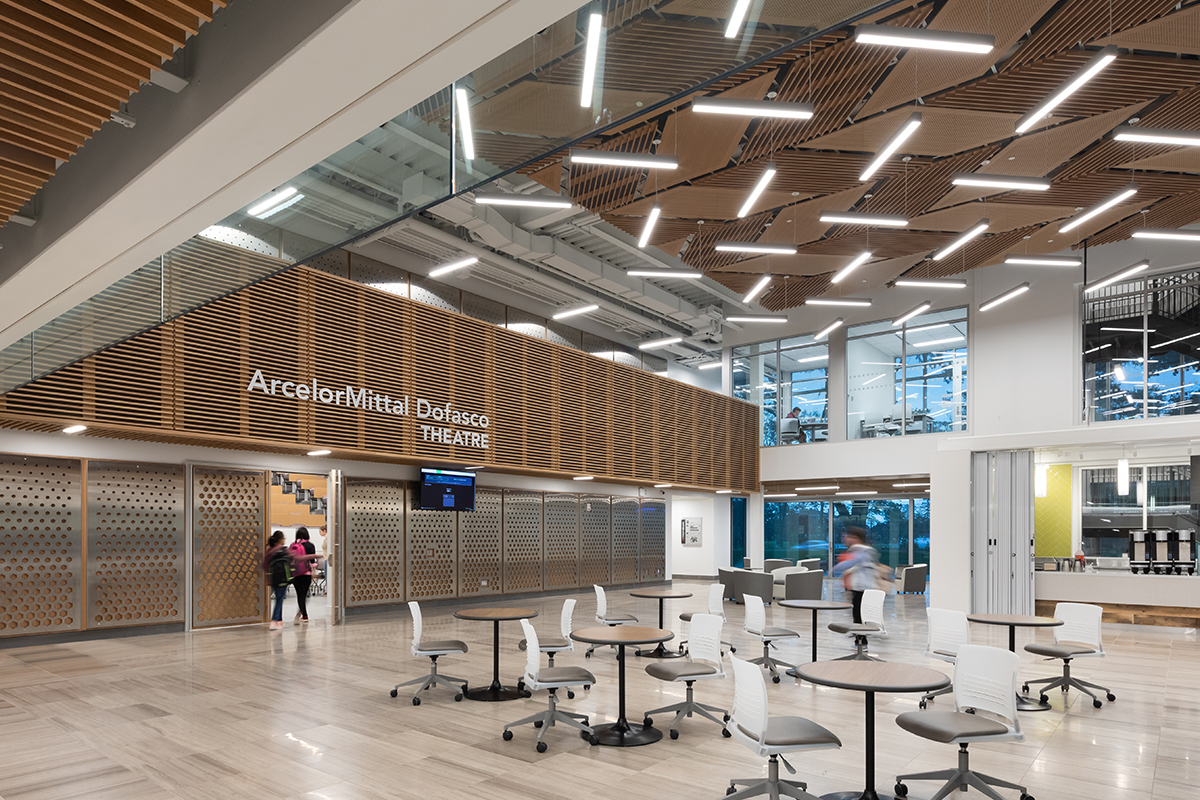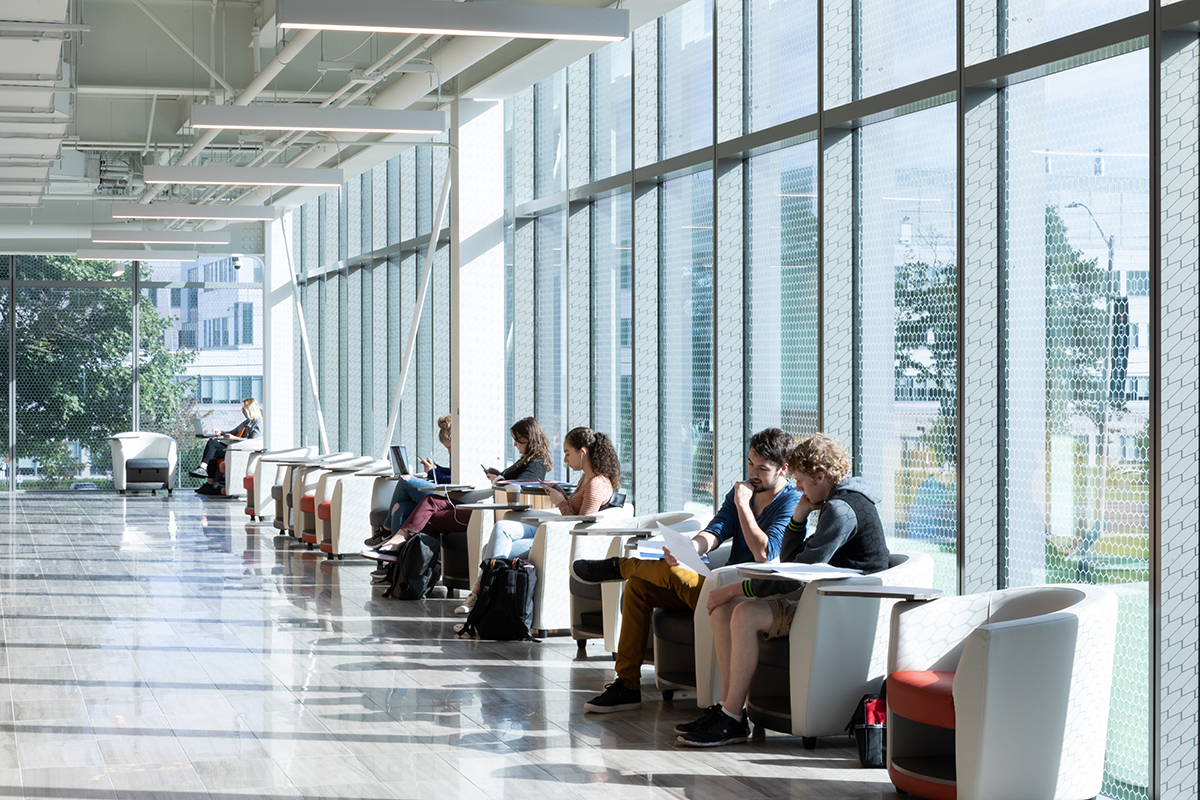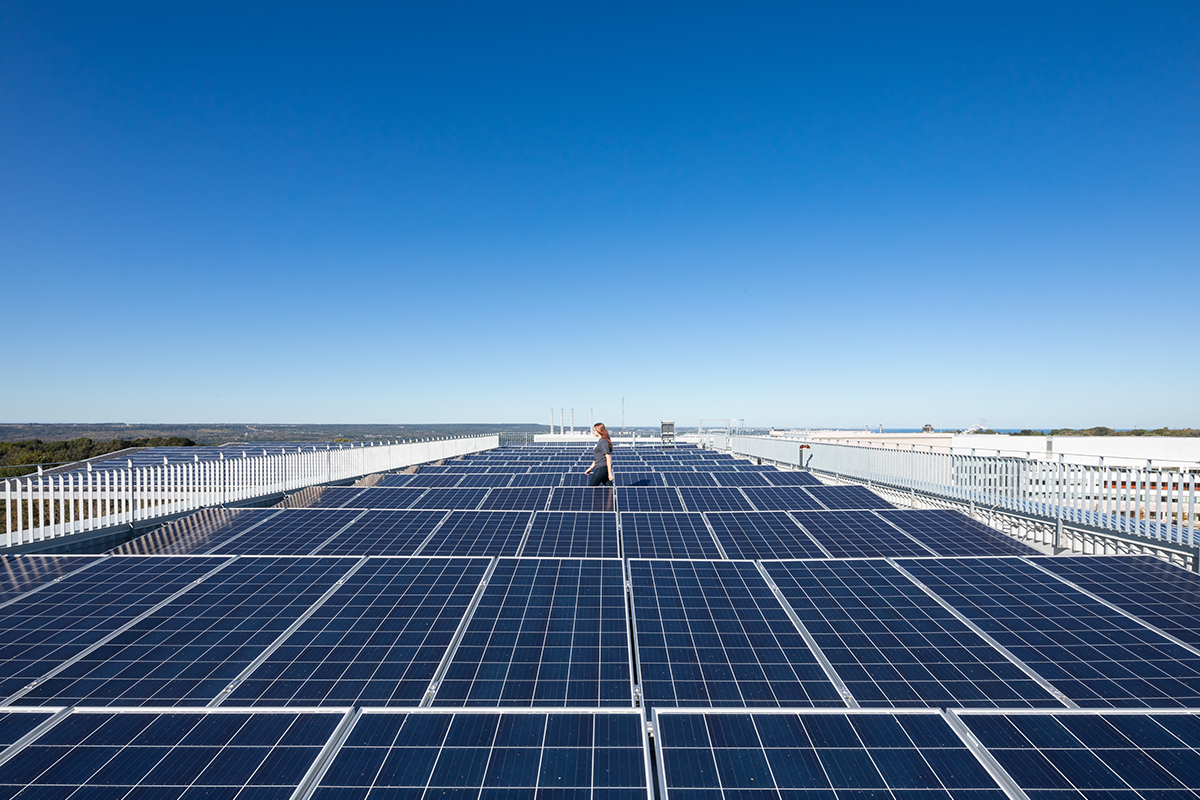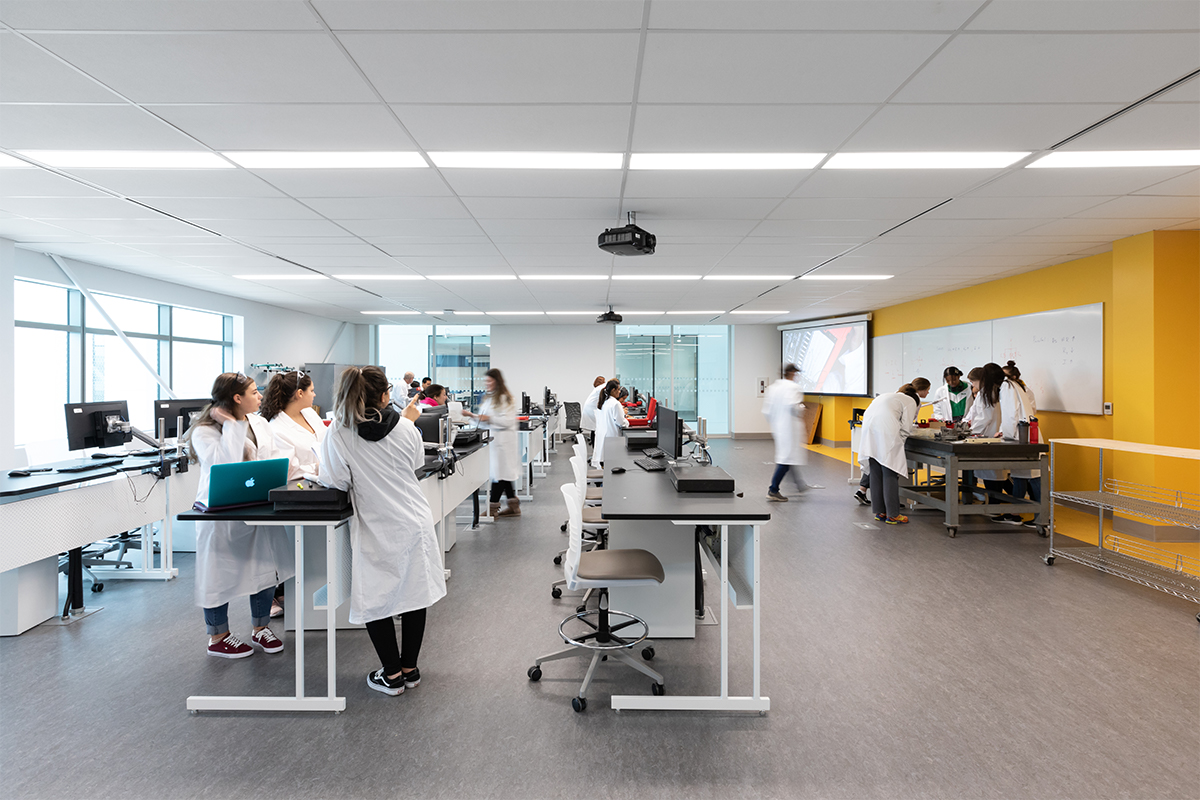Hamilton, ON
The Joyce Centre for Partnership & Innovation
Opportunity
With funding tied to a fast-tracked timeline, and ambitious goals to be one of the first ZCB buildings certified in Canada, The Joyce Centre was seen as a space that not lived to ZCB standards but also trained the Net Zero Facilities Management teams of the future, connecting the form and function of the design in a new and exciting way. As an addition to an important entry to the campus, it also presented the College with the opportunity to create a new landmark on its campus.
Response
Situated within a constrained site, the award-winning facility responds to the surrounding buildings and three public amenity spaces animate the grade level, knitting the campus fabric together. Adaptable classrooms and lecture theaters are organized around a central, sunlit atrium which acts as a social activator, incorporating a café, informal lounges and private study areas. State-of-the-art labs, workshops and study spaces are flexible and modular, enabling students to cluster into groups or work independently, as needed. These versatile learning spaces are designed to evolve over time to accommodate advancing technology and the contributions of industry partnerships.
Sustainability
The first to achieve ZCB Certification for both design and performance in Canada, the design generates 100 percent of the energy needed to power itself through a year. The high-performance building envelope integrates passive design strategies which significantly reduce the building’s heating and cooling loads.
Solar photovoltaic panel arrays span the length of the building and produce 721,000 kWh of clean, renewable electricity per year. 28 geothermal wells, on-site stormwater harvesting, sensor-controlled LED lighting, high-efficiency plumbing fixtures and a variable refrigerant heat pump system, combined to an energy model of 73 ekWh /m2, where a typical institutional building would require 230-300 ekWh/m2. The facility provides continuous performance feedback that informs users of their personal energy usage. Through real-time data, students are empowered to adapt their behaviour and improve the operations of the building.
Services
Architecture, Interior Design, Laboratory Design, Sustainable Certification Facilitation
Sectors
Education, Science & Research
Team Leaders
Joanne McCallum
Kevin Van Hartingsveldt
Drew Hauser
Adam McCaughan
Partners & sub consultants
B+H Architects - JV Partnership
RDH - Building Science
Ellis Don - Construction Manager
Mantecon Partners - Structural
TMP - Mechanical
MBII - Electrical
Size
96,000 SQ. FT.
Sustainability:
Net Zero Certified



